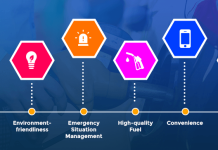In today’s fast-paced world, effective relaxation and stress management techniques are more important than ever. While there are numerous methods available, float therapy has been gaining popularity for its unique approach to relaxation. This article will compare float therapy with other well-known relaxation techniques, including yoga, meditation, and massage therapy, highlighting the unique benefits and how each method can complement the others.
Float Therapy
Float therapy, also known as sensory deprivation or isolation therapy, involves lying in a float tank filled with water saturated with Epsom salt. The high salt concentration allows the body to float effortlessly, creating a sensation of weightlessness. The tank is designed to minimize sensory input, providing an environment free from light, sound, and tactile sensations. This unique setup promotes deep relaxation, reduces stress, alleviates pain, and enhances mental clarity. For those looking to experience this rejuvenating method, The Float Institute – A Zero Gravity Float and Wellness Center offers top-notch facilities and services.
Yoga
Yoga is an ancient practice that combines physical postures, breathing exercises, and meditation to promote physical and mental well-being. There are various forms of yoga, such as Hatha, Vinyasa, and Yin, each offering different benefits. Yoga is renowned for its ability to increase physical flexibility, strength, and balance, while also fostering mental relaxation and stress relief.
Comparison:
- Physical Aspect: Yoga involves physical movement and postures that improve muscle tone, flexibility, and overall physical health. In contrast, float therapy offers a passive physical experience, where the body is buoyed by the water, promoting muscle relaxation and pain relief without physical exertion.
- Mental Aspect: Both yoga and float therapy can enhance mental clarity and reduce stress. However, while yoga combines physical movement with mental focus, float therapy emphasizes sensory deprivation to achieve a meditative state.
Meditation
Meditation encompasses a variety of practices designed to focus the mind and promote a state of calm and clarity. Techniques such as mindfulness and transcendental meditation involve concentrating on a specific thought, object, or activity to achieve mental stillness. The benefits of meditation include reduced anxiety, improved emotional health, and enhanced concentration.
Comparison:
- Mental Focus: Meditation requires active mental engagement to focus the mind and achieve a state of relaxation. Float therapy, on the other hand, uses sensory deprivation to naturally guide the mind into a meditative state, often requiring less effort to maintain focus.
- Environment: Traditional meditation can be practiced anywhere, often involving a quiet space and a comfortable position. Float therapy provides a controlled environment that minimizes external stimuli, potentially making it easier for some individuals to achieve deep relaxation.
Massage Therapy
Massage therapy involves the manipulation of muscles and soft tissues to promote relaxation, reduce muscle tension, and alleviate pain. There are various types of massage, including Swedish, deep tissue, and sports massage, each targeting different needs. Massage therapy is known for its immediate physical benefits, such as improved circulation and reduced muscle stiffness.
Comparison:
- Tactile Experience: Massage therapy relies on physical touch to manipulate muscles and promote relaxation. Float therapy, by contrast, eliminates tactile sensations through sensory deprivation, providing a different kind of physical and mental relaxation.
- Immediate Relief: Both massage therapy and float therapy can offer immediate relief from physical discomfort. However, massage therapy directly targets muscle groups, while float therapy promotes overall muscle relaxation through buoyancy and weightlessness.
Unique Aspects of Float Therapy
Float therapy offers several unique benefits that set it apart from other relaxation techniques. The sensory deprivation aspect allows for a level of mental and physical relaxation that can be difficult to achieve in other settings. Additionally, the magnesium in Epsom salt is absorbed through the skin, providing added health benefits such as improved muscle function and reduced inflammation.
Complementary Benefits: While each relaxation technique offers its own set of benefits, they can also complement each other when integrated into a holistic wellness routine. For instance, practicing yoga can improve physical flexibility, which can enhance the comfort of floating. Similarly, regular meditation can deepen the mental relaxation experienced during float therapy sessions. Massage therapy can address specific muscle tension that may be further alleviated by the weightlessness of float therapy.
Conclusion
Each relaxation technique—float therapy, yoga, meditation, and massage therapy—offers unique benefits that cater to different aspects of physical and mental well-being. Float therapy stands out for its ability to induce deep relaxation through sensory deprivation, providing a unique complement to the more active or tactile methods of yoga, meditation, and massage. Integrating these techniques can create a comprehensive approach to stress management and overall wellness, helping individuals achieve a balanced and relaxed state of mind and body.
By exploring and combining these methods, you can tailor their relaxation practices to best suit their personal needs and preferences, ultimately enhancing their quality of life.























